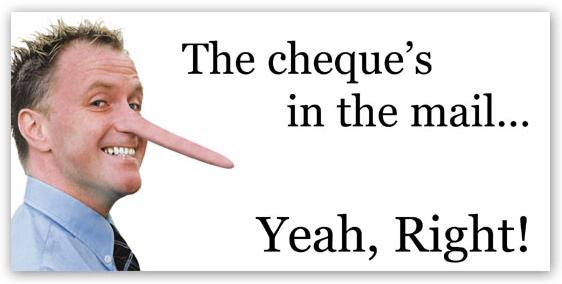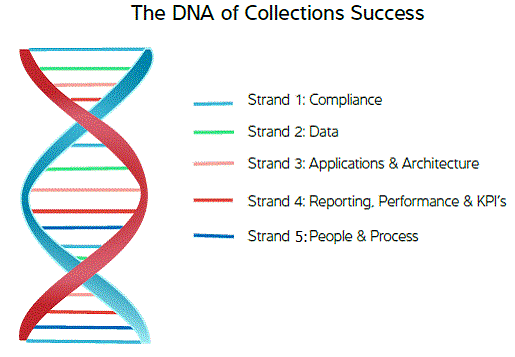
Isn’t a Collections Department another form of a Contact Center? Do Customer Service and the Collection Departments have to be silos? The answer is no!
Wouldn’t it be helpful if there was visibility to all customer interactions so that favorite channels of communications could be identified and used for channel preference for collections campaigns. The answer is yes!
Customers who get behind in payments and are able to pay expect to be able to communicate and pay easy, anywhere and anytime so why not accommodate and increase collections revenue and improve over all Customer Experience. The collections experience does not have to be a bad dark experience. It is stressful enough because of the nature of the transaction but with the right tools everybody wins.
Household Debt Is Growing

Rising household debt has been one of the most consistent and widespread economic trends. Since 2000, total global household debt has risen by 81%, culminating in worldwide household debt now at an all time high. In the U.S., the total household debt now stands at a record $11.5 trillion, with the average American owing $47,500. In Latin America, Brazil has doubled its household debt-to-income levels in the last five years. Similarly, in Australia, household debt-to-income has grown in the last five years to 150%, where it is now the highest in the world. In Asia, South Korea, Thailand, and Malaysia are all similarly experiencing explosive growth in household debt.
Delinquency Rates Remain High
With these high levels of household debt comes the added problem of high levels of delinquency. Delinquency rates peaked during the Global Financial Crisis (GFC) in 2009 with many countries experiencing record delinquency rates. Whilst these rates have since fallen, they still have a way to go to get back to pre-GFC levels. With these high levels of delinquency, combined with record levels of household debt, it is more important than ever to be able to contact your customers who are in debt. Contacting Customers Is Getting Harder Oftentimes, organisations will attempt to contact their customers in debt via a variety of channels. However, each channel has its own unique challenges. Sixty-eight percent of all emails are considered to be spam. As a result, email has become an increasingly ineffective method of communication. Direct mail fares little better, with 44% of it never being opened. Outbound phone calls also have their own challenges. With the prevalence of mobile phones amongst the consumer base, it means that there are now more voice mail-capable machines than ever. With many of your customers choosing to divert their phones to voice mail, this has resulted in a seven percent reduction in contacts year-on-year. Lastly, there is increased regulatory focus on incidents of harassment in collections, and as a result, we are seeing legislation and guidelines in many countries limiting what messages your organization can leave on a debtor’s voice mail, and also limiting the number of times you can contact a debtor within a certain time period.
It Is Harder To Collect Than Ever

So we know that we have record levels of debt combined with high delinquency rates, and it is getting harder to contact your customers. This means that collections is busier and more challenging than ever.
And Then There Are The Operational Challenges
And it wasn’t as if collections was easy to begin with. Despite advances in strategy, methodology, and technology, the collections world continues to be challenged trying to achieve efficiency and effectiveness, with the typical collections organization experiencing:
- 25% of agent time being idle
- 70-80% of the time you are not talking to the right people
- 30% of the time, when you are talking to the right party, they cannot or will not pay
You Need To Recover Debt Quickly
However, we know that if you don’t contact your customers in debt quickly and effectively, you can lose out on significant value of that debt. In these tough economic times, your customers in debt may also be in debt to other organisations. As a result, you are in competition with other creditors for the consumer’s limited resources. Studies have shown that as debt ages, the value that can be typically recovered, decreases over time. Clearly, now more than ever, it is important to be able to swiftly recover debt.
The DNA of Collections Success

“The DNA of Collections Success” approach centers around the breakdown of collections into separate focus areas or “strands”. Each of these strands are intertwined, however, by focusing on each strand in isolation, and by driving specific best practice initiatives in each strand, it allows an organization to be able to break a transformation project into bite-sized chunks. The five strands that form the DNA of Collections Success are:
- Compliance
- Data
- Applications and Architecture
- Reporting, Performance, and KPIs
- People and Process
Strand 1: Compliance
In the last five to ten years, there has been increased regulatory attention on the collections industry. In many countries, there are now regulations which govern the actions of a debt collector, and the extent to which an organization can pursue debt. This includes how often an organization can contact a customer in debt. The penalties for breaches of these regulations can be severe, with fines that can be directed at an individual debt collector, as well as at an organization.
- Ensure thorough understanding of relevant collections regulations and guidelines.
- Perform an assessment of the impact of these regulations and guidelines on your organization.
- Ensure that adherence to these regulations and guidelines is embedded within the policies, processes, and procedures of your organization.
- Wherever possible, ensure that compliance requirements are embedded within your technology systems (automation of do not call lists, on-screen display of agent scripts, abandonment rate on outbound calls)so that compliance is systemic within your organization.
Strand 2: Data Clean and accurate contact information
Do not underestimate the importance of clean and accurate contact information in Collections. If you do not have clean and accurate contact information on your customers, it is going to be harder to contact them when trying to pursue a payment that is in arrears. This means that you need to ensure that you capture correct customer information (contact details) right from the beginning. And that means looking at the customer signup process. A Bank identified that the quality of its customer contact information was poor, which manifested itself in difficulties in contacting customers once they were in arrears. The source of this problem was that the branch staff were prone to taking shortcuts in data capture when they went through the customer signup process. As a result, contact phone numbers were not always accurate and not always captured. This organization had to go through months of re-engineering process and systems to rectify this situation. Branch staff had to be re-trained, managed, and incentivised towards capturing accurate contact details. Systems had to be changed to ensure that contact number information was mandatory and validated.
Update Your Lists In Real Time –
In Collections, you spend a great deal of your time and effort in trying to contact a customer and convince them to settle their debt. However:
- What happens if your customers do what you want them to do, and settle this debt themselves?
- What happens if they call you to make a payment arrangement?
What you don’t want to do is to make an outbound call to these customers as it is both a waste of your costly resources, but also delivers a very poor customer experience. Ideally, you want to check against your collections system just prior to making each contact. This means real-time checks and integration between your customer contact platforms (outbound dialers, email, SMS, Chat, etc.) and your collections systems.
Segment and Target Your Customers For Specialized Treatment –
By segmenting your customer base, it allows you to apply specific treatments to each segment. These specialized treatments can include:
- Using the right channel for each segment
- Having and targeting the right agents for different segments
- Having a different approach or script for different segments
Whilst collections is good at segmenting their customers (typically by product, the age of the debt, or by the outstanding debt amount) more can be done to specifically target your customers. Such as:
- Are they likely to default? If so, you can try lower cost channels such as email and SMS to proactively contact them prior to them defaulting.
- Are they a first time offender? You can take a “soft” approach to these customers by directing them to agents with a “soft” script, to allow for the fact that they may have inadvertently defaulted.
- Are they a repeat offender? You can direct these experienced agents who know to take a firmer approach with these customers.
- Are they a special circumstance “hardship” customer? Some of your delinquent customers may have fallen into hardship and be unable to meet their commitments. However they may be likely to get out of hardship at some point in the future. As such, whilst they may be a customer in debt today, they may well be tomorrow’s valuable customer. A case-management approach may be required which takes into account their specific circumstances, and offers them special payment terms.
Strand 3: Applications and Architecture
Intercept your customers when they call –
Typically in collections, lots of time and effort is spent in trying to contact customers in debt. However, sometimes, those very same customers may contact your organization (perhaps another part of your organization). When this happens, there is an opportunity to intercept these customers and direct them towards your collections agents.
A Bank identified that customers in debt would often check their account balance. This bank implemented a strategy whereby customers who used their telephone banking system would be intercepted and directed towards their collections agents. By intercepting a customer that had been identified and verified on their telephone banking system, and then sending that customer to collections, this bank was able to directly impact their right-party contact rate.
Smart Dialing Rules –
In this age of mobile phones, and home phones that have digital displays, customers can see the phone number of the calling party. This introduces a new challenge for collections organisations with some customers are choosing to not answer phone calls based on whether or not they recognize this phone number. Customers are sometimes choosing to not answer when they see a phone number they do not recognize (because it comes from an area code that is outside of where they live). Alternatively, some customers are deliberately choosing to ignore a phone call specifically because do recognize it (they know it is from an organization they owe money to).
To work around this, some collections organizations are putting systems in place that automatically change their outbound Caller ID, if they have been previously unsuccessful in contacting that customer.
Strand 4: Reporting, Performance and KPIs
Ensure that you set the correct targets and KPIs throughout your collections operations – It is important to ensure that there is an accurate understanding of what collections operations is trying to achieve. What people are trying to achieve vs. what they are performance managed towards achieving are often two separate things. It is important for there to be alignment (but not necessarily duplication) of KPIs throughout your collections operations.
Management of collections operations is impossible without accurate real-time and historical reporting that is available when you need it. With today’s ever changing requirements, you should ensure that your reporting solution is flexible to adhoc requests, and has the ability to drill down to detail when required.
Strand 5: People and Process
Ensure that you are managing your people and that they are following the right processes – Many organizations record their contact centre agents’ conversations with the intent to detect and address any issues through a Quality Assurance process. However, this strategy is only able to detect issues after they have occurred. By that stage, whatever you were seeking to avoid has already happened.
To address this, some organizations are implementing continuous improvement cycles in their training and testing programs. They put their agents through a program which assesses and manages their skills and competencies through testing. Any gaps in knowledge and skills are identified and addressed through subsequent training. These organizations are looking to technology solutions to deliver all of this in a way which does not take away from an agent’s core function of being available to make or answer calls.
What results are being achieved with the DNA of Collections Success?
What are the some of the results achieved by collections organizations that have engaged this methodology?
- 100% increase in calls answered
- 100%-200% * increase in penetration rate
- 100-160% * increase in right-party contact
- 120% Increase in promises to pay
* All variances are due to the fact that figures are sourced for different campaigns.
Conclusion
Business-as-usual when it comes to collections efforts no longer works well today. At a time when everyone’s collection volumes are up and your business is competing with other creditors for your customers’ goodwill and limited resources, you need to look for innovative strategies to drive efficiency and success in your collections area. The strategies suggested in this paper are good places to start.
Your Collections Strategy Persona does not have to be gloomy and dark! It can be bright, successful and solutions oriented!
Below are two bright examples – Early 1960’s Radios


BillCookCX